PORTLAND BATTERY AND GUN (80 POUNDER)
VICTORIA PARADE PORTLAND, GLENELG SHIRE
-
Add to tour
You must log in to do that.
-
Share
-
Shortlist place
You must log in to do that.
- Download report
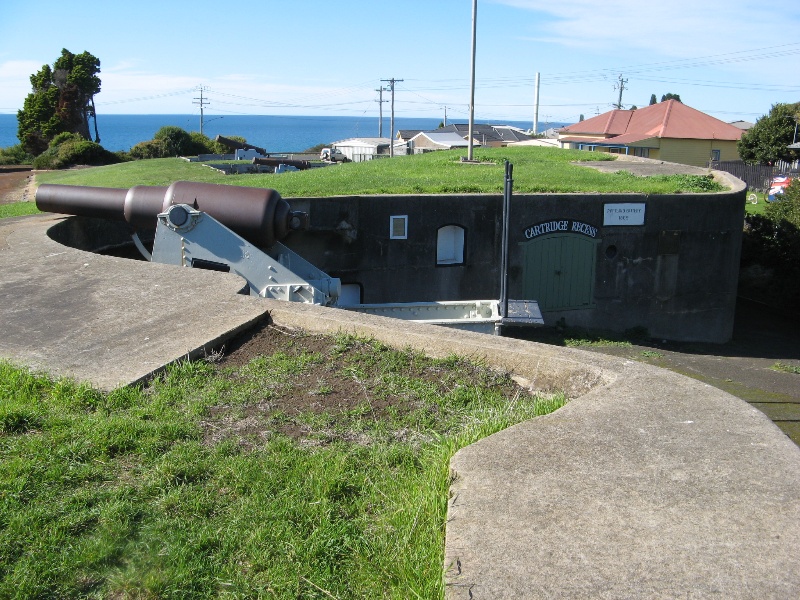

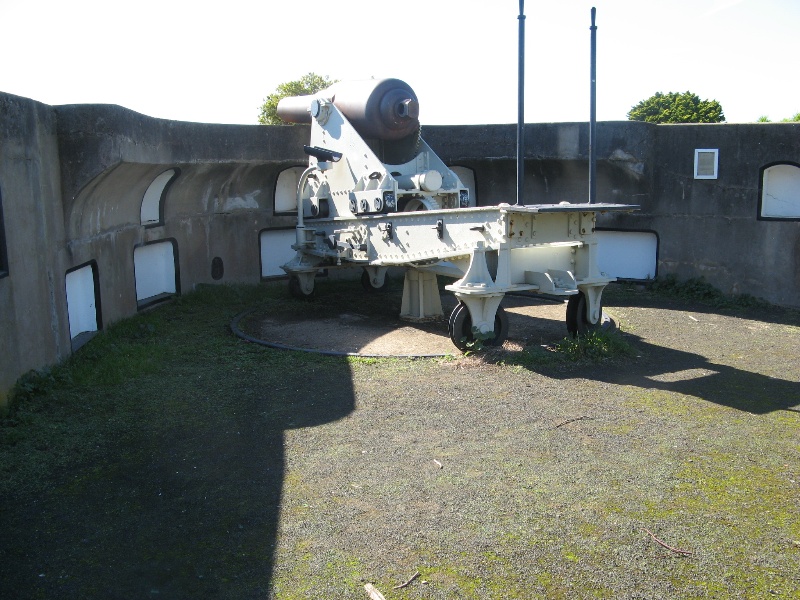
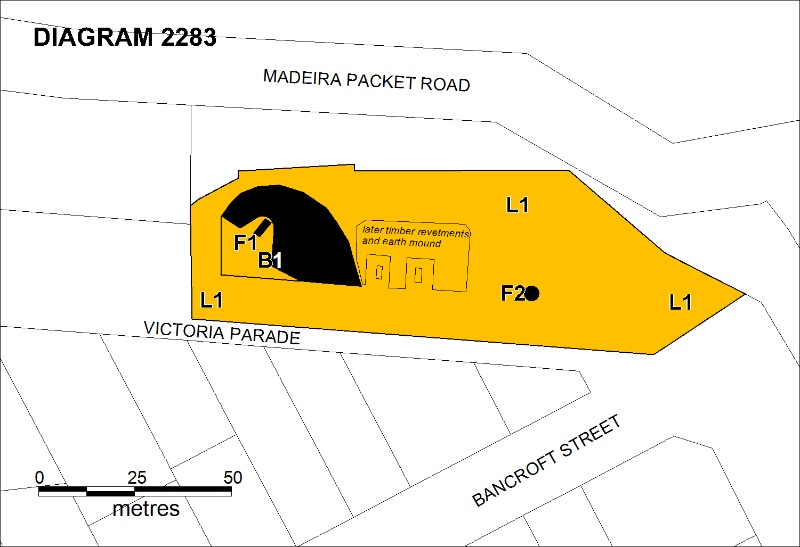
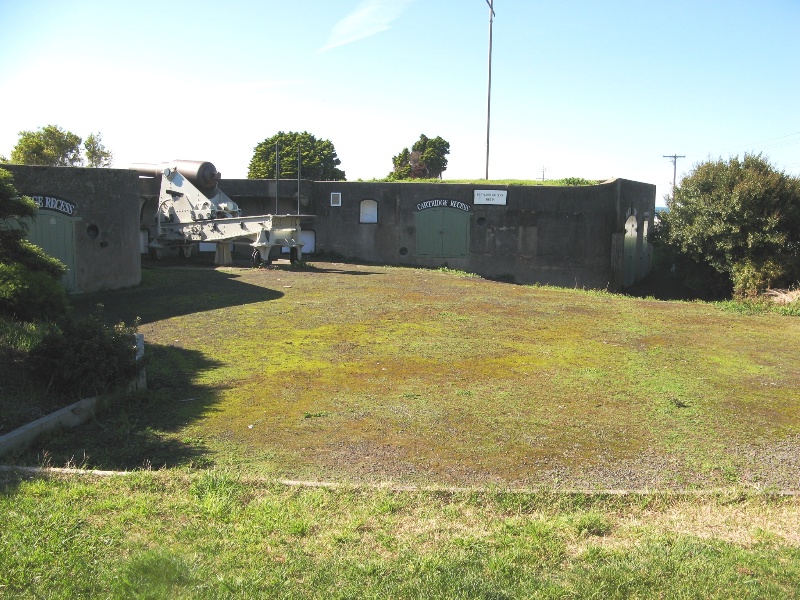

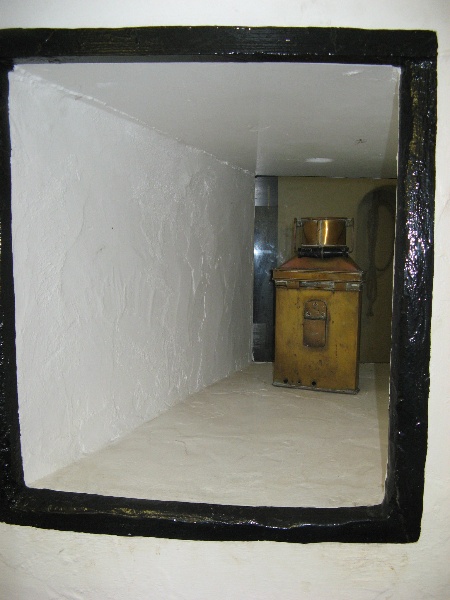
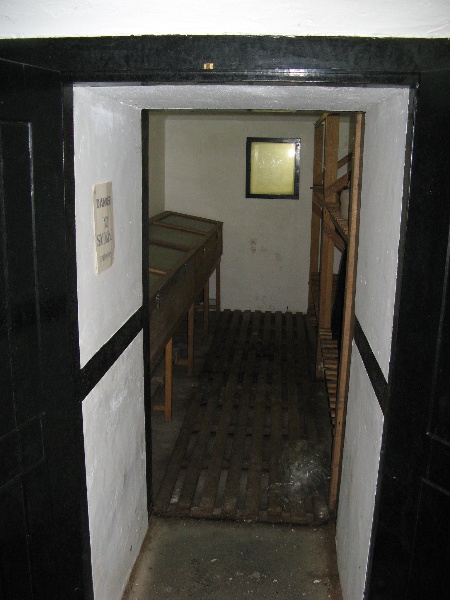
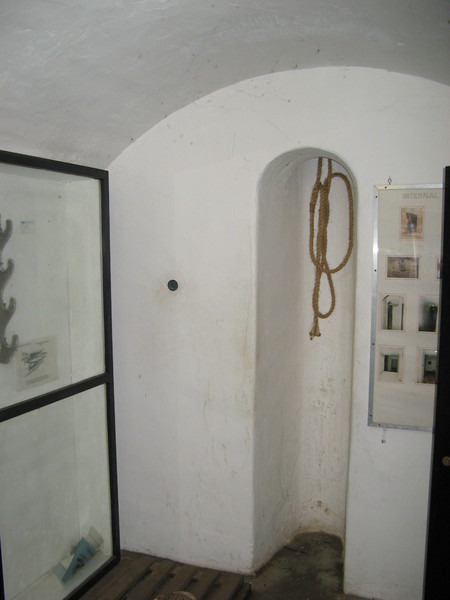
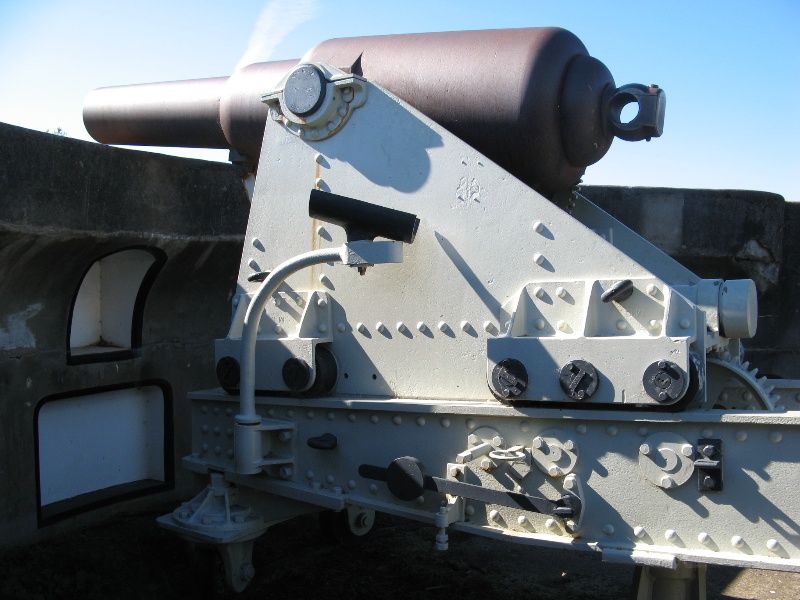
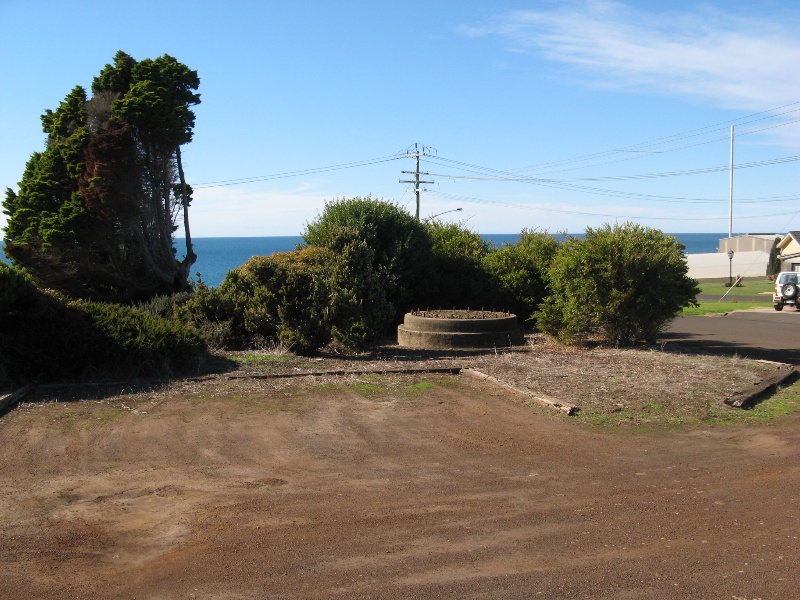
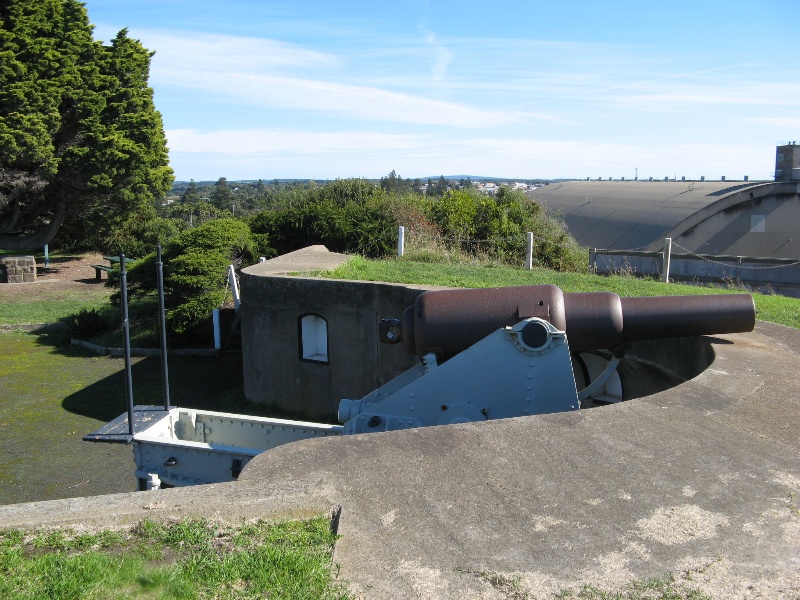
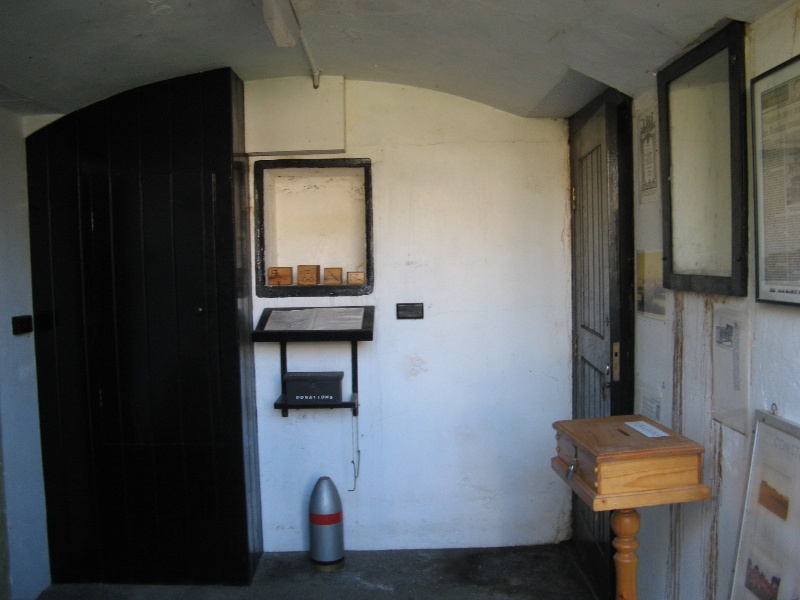
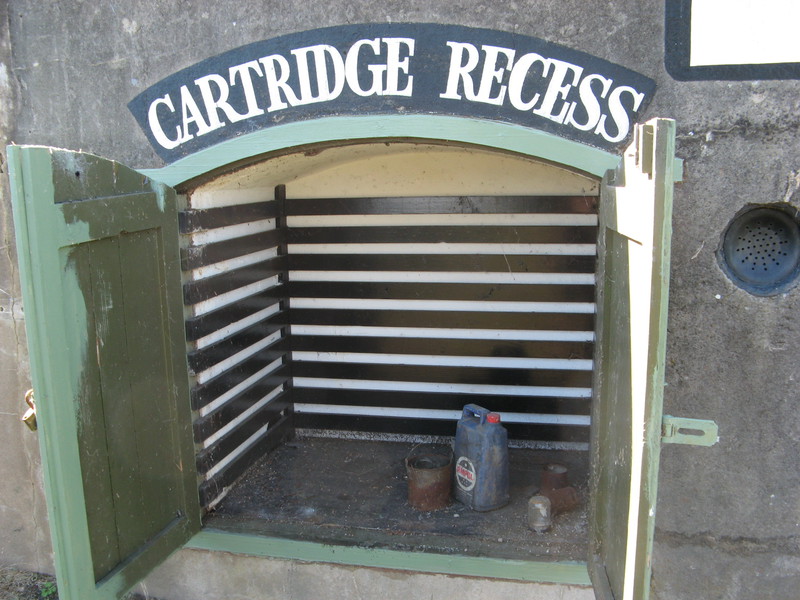
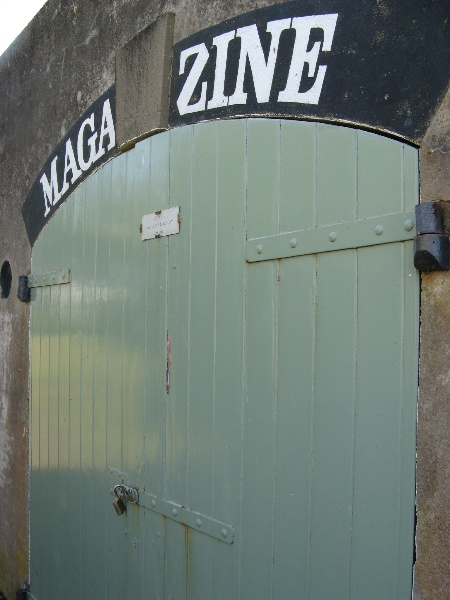

Statement of Significance
What is significant?
The Portland Battery, with a concrete gun emplacement, underground magazine and 80-pounder gun, is located on an elevated site at the entrance to Portland Bay. The battery was constructed in 1889-90 as part of the implementation of British recommendations for the defence of Victoria, and the design was based on British prototypes. The batteries at Portland, Port Fairy and Warrnambool were designed to act as an integrated system of defence for south-west Victoria's strategically important bays, ports and industries in response to a perceived threat from Russian warships. The contract for the first stage of the battery, the magazines, upper chamber and parapet wall, was let to George Weeks for £1982/12/0 in 1889. The second stage, the relocation of the old lighthouse on the site and the construction of the gun emplacement, was carried out by Messrs Nelson & Marshall in 1890 for £2436. The 80-pounder gun was cast at the Royal Gun Factory at Woolwich, England, in 1866, and was originally purchased for the defence of Port Phillip, but was moved here in 1890. Following Federation, ownership of the battery was transferred to the Commonwealth in 1901 for the compensation of £963. The battery was manned by volunteer militia until 1904, when the group was disbanded. From 1941 the battery was used by the Volunteer Air Observer Corps, but was abandoned as a defence facility after the war. The site became derelict but the battery and the gun were restored as part of the Victoria's 150th anniversary celebrations in 1984.
The Portland Battery consists of an underground concrete magazine above which is a large grassed earth rampart and a concrete gun emplacement. Built into the concrete wall around the gun are a number of shallow recesses for lamps and wood-lined cupboards for cartridges. Wooden doors marked 'Magazine' and 'Lamp Passage' lead into separate foyers from which ladders lead down through vertical shafts to the magazine chamber and to the lamp passage parallel to it from which the magazine was lit. The design of the battery, with its thick concrete walls, earthen rampart and the careful separation of the munitions from sources of ignition, is typical of nineteenth century battery design. The original 80 pounder gun (manufacture number 25) is a rifled-muzzle-loader cannon, still on its original wrought iron, steel and gun-metal carriage and traversing slide mounted on a traversing rail. Marks include 'R F G' over 'No 25' over '1866', on the left hand trunnion (the cylindrical projection from the side of the barrel that rest on the carriage and forms a pivot point); the barrel has a Victoria Regina (VR) cypher; and the carriage and slide bear the mark 'MC'. The remains of an emplacement for a World War II Volunteer Observer Corps aircraft searchlight are located nearby.
This place is located on the country of the Gunditjmara and Eastern Maar people.
How is it significant?
The Portland Battery is of historical and architectural significance to the state of Victoria and the original 80 pounder gun is of scientific (technological) significance.
Why is it significant?
The Portland Battery is of historical significance for its association with the early defence of the colony of Victoria and as a reminder of the importance of coastal defences in the early colonial period. It demonstrates the dependence of the young colony on British military expertise and the defence strategy of artillery bombardment of ships from coastal emplacements, and on the British manufacture of artillery. It reflects the importance of Victoria's south-west harbours to the colony, and the reliance for their defence on the ports of Portland, Port Fairy and Warrnambool, which operated as a single artillery garrison. The Portland Battery is of historical significance for its association with the activities of the volunteer militia, who played an important role in the life of Victorian coastal towns.
The Portland Battery is of architectural significance as a fine example of British military design of the period. It is an intact example of the fortifications built in Victoria's coastal towns as part of a broader British colonial defence strategy in the 1880s. The design of the Battery shows careful consideration of the handling and storage issues for explosives and is indicative of battery and magazine practices of the nineteenth century.
The 80-pounder gun is of scientific (technological) significance as a now extremely rare example of nineteenth century naval artillery.
-
-
PORTLAND BATTERY AND GUN (80 POUNDER) - History
CONTEXTUAL HISTORY
[A Conservation Management Plan of Victorian Guns and Cannon, South Western Victoria was commissioned from Archaeo Cultural Heritage Services in 2007. The following information is taken from that report.]
Great Britain was the undisputed lord of the seas during the nineteenth century and part of its system of defence was to protect the lines of communication between its bases throughout the Empire. This was done by creating small bastions capable of defending harbours against foreign attack only until British forces could arrive. These limited defences often left locals fearful of their safety.
There were fears in Victoria in the early nineteenth century about a possible French invasion, and the discovery of gold in Victoria in 1851 and the outbreak of the Crimean War three years later made local fearful of a possible Russian invasion.
The colonies were dependent for defence on Britain's expertise, construction knowledge and arms technology, and on protection by the Royal Navy. They relied on military arms provided by the British, which were often obsolete pieces of artillery, and on British design of and approval for defensive constructions. Many of Victoria's forts and batteries were equipped with guns which had been formerly used on British forts or ships.
In 1877 Britain sent two military advisers and members of the Royal Engineers, Sir Major-General William Jervois and Lieutenant Colonel Peter Scratchley, to Australia to develop a scheme of defence for each of the colonies. For Victoria they recommended the development of defences for the principal ports: Geelong and Melbourne in Port Philip Bay, Portland, Warrnambool and Port Fairy in western Victoria and Lakes Entrance in Gippsland. The resources of western Victoria were proposed to be protected by a co-ordinated system which involved installing fixed defences at the strategically important and valuable ports of Portland, Warrnambool and Port Fairy, where batteries located at fixed elevated positions could bombard attacking ships with marine artillery.
The impressive size of the coastal defences and artillery helped Victorians to feel more secure about their defence capabilities.
The guns
Most coastal defence artillery pieces are naval artillery either taken from a ship or supplied directly to a battery. Naval artillery is generally larger and more powerful than the lighter land-based artillery and is designed specifically to destroy ships.
Nineteenth century artillery was cast using a unique mould for each cannon. In Great Britain cannons were made in Scotland and northern England by Low Moor, Walker and Carron amongst others, and taken to Woolwich for testing. Later in the nineteenth century new techniques developed, such as rifling the barrel for accuracy and breach (rather than muzzle) loading for greater rates of fire. Many of these new sorts of artillery were made at the Royal Gun Factory at Woolwich.
Nineteenth century naval artillery was heavy and difficult to manoeuvre into firing position. They were therefore secured onto wheeled wooden trolleys. Attachments on the carriages allowed for bock and tackle pulley systems to be used in servicing and firing the guns. As artillery became heavier, these means of moving the guns were no longer adequate, and traversing slides with their own wheels were developed that allowed the gun carriage to be mounted on the slide. These absorbed the recoil of the guns when fired and returned the gun to its original position.
After their useful life in England, many cannons were melted down and the metal reused, but some were given to colonial authorities, and would replace even older artillery in the larger ports, and the even older artillery in these ports might be given to lesser ports or even scrapped.
There is in Portland, Warrnambool and Port Fairy in western Victoria a collection of fourteen guns manufactured in Britain in the nineteenth century which are now extremely rare examples of their kind.
HISTORY OF PLACE
(From Sera-Jane Peters & Jude Schahinger, 'Conservation Management Plan, Portland Battery 1889', 2009)
The Portland Battery was built on the site of the Portland lighthouse, built in 1859. It had a commanding view over Portland Bay, though that is now blocked by concrete silos and wharf infrastructure.
The first stage of the Battery, comprising the magazine, upper chamber and parapet wall, was completed in 1889 for a cost of £1982. The second stage, which included the relocation of the lighthouse to North Bluff and the construction of the gun emplacements, was completed in 1890.
The design of the battery was based on the recommendation of the two military advisers sent out from Britain, Sir Major-General William Jervois and Lieutenant-Colonel Peter Scratchley. The construction of the magazine and lamp passage required an excavation 4.19 m deep, 10.74 m long and 7.01 m wide, and involved not only the removal of large amounts of soil but also the reinforcement of floors, walls and roof with thick concrete. The two underground spaces were covered with a 0.9 m thick concrete slab, on which was constructed the upper receiving chamber and entryway to the lamp chamber, also topped with a 0.9 m thick concrete slab and covered in turn with soil and grass.
The battery was manned by volunteer artillerymen until 1904. Portland's first volunteer unit was formed in 1859, in response to a perceived Russian attack during the Crimean War. This unit disbanded in 1863 but reformed in 1866 as part of the Royal Victorian Volunteer Artillery, and disbanded again in 1884 with the disbandment of the volunteer system.
The Portland Battery of the 2nd Brigade of the Victorian Garrison Artillery formed shortly thereafter. It was part of the new part-time paid volunteer militia, which was to be better equipped and trained.
The only original gun at the battery is the 80-pounder rifled-muzzle-loader cannon, which is still mounted on its steel traversing platforms and rails. It was manufactured by the Royal Gun Factory at Woolwich in 1866, and was originally purchased for the defence of Hobson's Bay by the then treasurer of Victoria, George Verdon, when he visited London in 1866, and was shipped to Victoria the same year. It was moved to Portland in 1889 in response to a perceived threat from Russian warships, and installed here in 1890. It was only in service for a short period being de-commissioned early in the twentieth century.
(The other guns now (2011) at the battery are not included in the registration. They are a 32-pounder cast iron smooth bore cannon (the middle of the three guns now at the battery) and a 68-pounder smooth-bore cannon, now in modern timber gun bay on the eastern side of the battery.)
Following Federation the Battery was transferred from the colony of Victoria to the Commonwealth on 1 March 1901 for the compensation of £963. At that time the Portland Battery contained one 5" Breech loaded gun and two 80-pounder rifled muzzle loader guns. After the disbandment of the battery in 1904 the guns and emplacements deteriorated rapidly. In 1919 the 5" gun was moved to the Naval Drill Store (Drill Hall) in Bentinck Street. In 1928 the Borough of Portland took over the Battery under a lease/occupancy agreement. AT that time it was noted to be in a dangerous state.
From 1941 the Battery was uses by the Volunteer Air Observer Corps, to patrol the skies for enemy aircraft. The footings of a WWII structure can be seen to the immediate east of the Battery structure.
The Portland Battery was abandoned as a defence facility after WWII. Its deteriorated condition attracted public attention as Victoria was preparing for its 150th anniversary celebrations. In February 1983 a steering committee was formed to prepare a plan for the restoration of Battery Point. The project was conceived in two stages: the first being the restoration of the magazine and the provision of new services; and the second the restoration of the guns and carriages and landscaping of the grounds. The gun was restored by apprentices at the Bendigo Ordinance Factory in 1984. The project had assistance from the Commonwealth Employment Programme.
For the following decade the site was cared for by the committee, was regularly opened to the public, and the cannons were used in local celebrations. The committee was disbanded in 1993 and since then has not been opened on a regular basis. It is now managed by the Shire.
The site now contains three pieces of artillery: the 80-pounder which is original to the site; and a 32-pounder and a 68-pounder, both of which were moved to the site as part of its restoration. The latter have been recommended to be added to the VHR as heritage Objects.
PORTLAND BATTERY AND GUN (80 POUNDER) - Assessment Against Criteria
a. Importance to the course, or pattern, of Victoria's cultural history
The Portland Battery is of historical significance for its association with the early defence of the colony of Victoria. It demonstrates the dependence of the young colony on British military expertise and on the British manufacture of artillery, and also the defence strategy of artillery bombardment of ships from coastal emplacements. It reflects the importance of the south-west harbours to the colony and the reliance for their defence on the ports of Portland, Port Fairy and Warrnambool, which operated as a single artillery garrison.
b. Possession of uncommon, rare or endangered aspects of Victoria's cultural history.
The 80-pounder gun and its carriage are both extremely rare examples of their kind, and few other examples have been identified in the world of a gun on its original carriage and still in its original emplacement.
c. Potential to yield information that will contribute to an understanding of Victoria's cultural history.
d. Importance in demonstrating the principal characteristics of a class of cultural places or environments.
The Portland Battery demonstrates the British design of coastal defences, naval artillery during the nineteenth century.
e. Importance in exhibiting particular aesthetic characteristics.
f. Importance in demonstrating a high degree of creative or technical achievement at a particular period.
g. Strong or special association with a particular community or cultural group for social, cultural or spiritual reasons. This includes the significance of a place to Indigenous peoples as part of their continuing and developing cultural traditions.
h. Special association with the life or works of a person, or group of persons, of importance in Victoria's history.
PORTLAND BATTERY AND GUN (80 POUNDER) - Plaque Citation
Constructed in 1889-90 as part of an integrated system of defence for south-west Victoria, this battery was manned by volunteer militia till 1904. The 1866 80 pounder gun is a rare example of 19th century British naval artillery.
PORTLAND BATTERY AND GUN (80 POUNDER) - Permit Exemptions
General Exemptions:General exemptions apply to all places and objects included in the Victorian Heritage Register (VHR). General exemptions have been designed to allow everyday activities, maintenance and changes to your property, which don’t harm its cultural heritage significance, to proceed without the need to obtain approvals under the Heritage Act 2017.Places of worship: In some circumstances, you can alter a place of worship to accommodate religious practices without a permit, but you must notify the Executive Director of Heritage Victoria before you start the works or activities at least 20 business days before the works or activities are to commence.Subdivision/consolidation: Permit exemptions exist for some subdivisions and consolidations. If the subdivision or consolidation is in accordance with a planning permit granted under Part 4 of the Planning and Environment Act 1987 and the application for the planning permit was referred to the Executive Director of Heritage Victoria as a determining referral authority, a permit is not required.Specific exemptions may also apply to your registered place or object. If applicable, these are listed below. Specific exemptions are tailored to the conservation and management needs of an individual registered place or object and set out works and activities that are exempt from the requirements of a permit. Specific exemptions prevail if they conflict with general exemptions. Find out more about heritage permit exemptions here.Specific Exemptions:General Conditions: 1. All exempted alterations are to be planned and carried out in a manner which prevents damage to the fabric of the registered place or object. General Conditions: 2. Should it become apparent during further inspection or the carrying out of works that original or previously hidden or inaccessible details of the place or object are revealed which relate to the significance of the place or object, then the exemption covering such works shall cease and Heritage Victoria shall be notified as soon as possible. Note: All archaeological places have the potential to contain significant sub-surface artefacts and other remains. In most cases it will be necessary to obtain approval from the Executive Director, Heritage Victoria before the undertaking any works that have a significant sub-surface component. General Conditions: 3. If there is a conservation policy and plan all works shall be in accordance with it. Note:A Conservation Management Plan or a Heritage Action Plan provides guidance for the management of the heritage values associated with the site. It may not be necessary to obtain a heritage permit for certain works specified in the management plan. General Conditions: 4. Nothing in this determination prevents the Executive Director from amending or rescinding all or any of the permit exemptions. General Conditions: 5. Nothing in this determination exempts owners or their agents from the responsibility to seek relevant planning or building permits from the responsible authorities where applicable. Minor Works : Note: Any Minor Works that in the opinion of the Executive Director will not adversely affect the heritage significance of the place may be exempt from the permit requirements of the Heritage Act. A person proposing to undertake minor works must submit a proposal to the Executive Director. If the Executive Director is satisfied that the proposed works will not adversely affect the heritage values of the site, the applicant may be exempted from the requirement to obtain a heritage permit. If an applicant is uncertain whether a heritage permit is required, it is recommended that the permits co-ordinator be contacted.PORTLAND BATTERY AND GUN (80 POUNDER) - Permit Exemption Policy
The purpose of the Permit Policy is to assist when considering or making decisions regarding works to the place. It is recommended that any proposed works be discussed with an officer of Heritage Victoria prior to making a permit application. Discussing any proposed works will assist in answering any questions the owner may have and aid any decisions regarding works to the place. The 2007 Conservation Management Plan by Archaeo for the Victorian Guns and Canon of South Western Victoria commissioned by the City of Warrnambool, Moyne and Glenelg Councils; and the 2009 Conservation Management Plan for the Portland Battery for Glenelg Shire by Sera-Jane Peters and Jude Schahinger will provide guidance for the future management of the cultural significance of the place.
The extent of registration protects the whole site. The addition of new buildings to the site may impact upon the cultural heritage significance of the place and requires a permit. The purpose of this requirement is not to prevent any further development on this site, but to enable control of possible adverse impacts on heritage significance during that process. All of the registered building is integral to the significance of the place and any external or internal alterations are subject to permit application.
-
-
-
-
-
PORTLAND BOTANICAL GARDENS
 Victorian Heritage Register H2214
Victorian Heritage Register H2214 -
GUN (68 POUNDER)
 Victorian Heritage Register H2289
Victorian Heritage Register H2289 -
GUN (32 POUNDER)
 Victorian Heritage Register H2290
Victorian Heritage Register H2290
-
'Lawn House' (Former)
 Hobsons Bay City
Hobsons Bay City -
1 Fairchild Street
 Yarra City
Yarra City -
10 Richardson Street
 Yarra City
Yarra City
-
-












